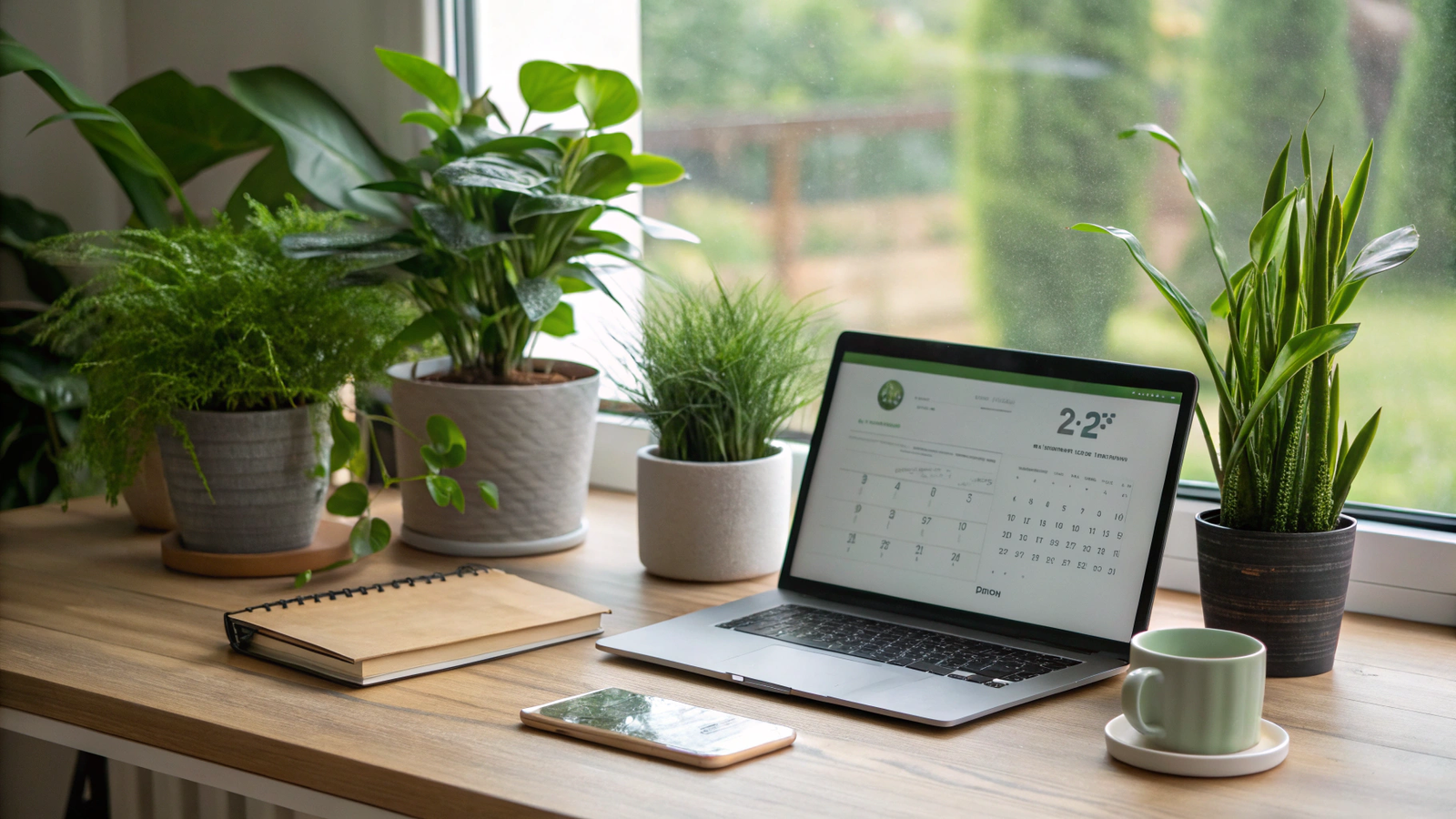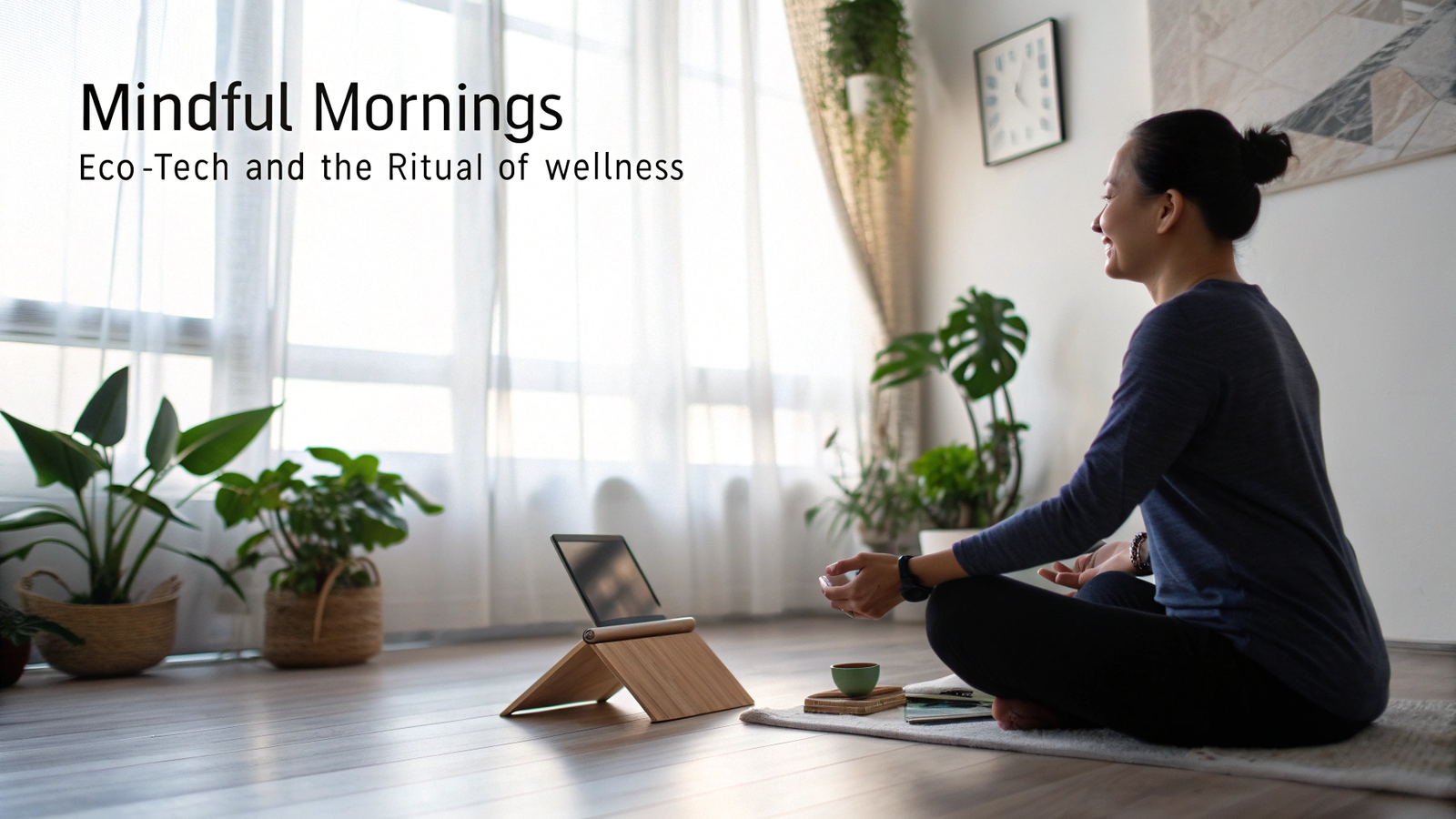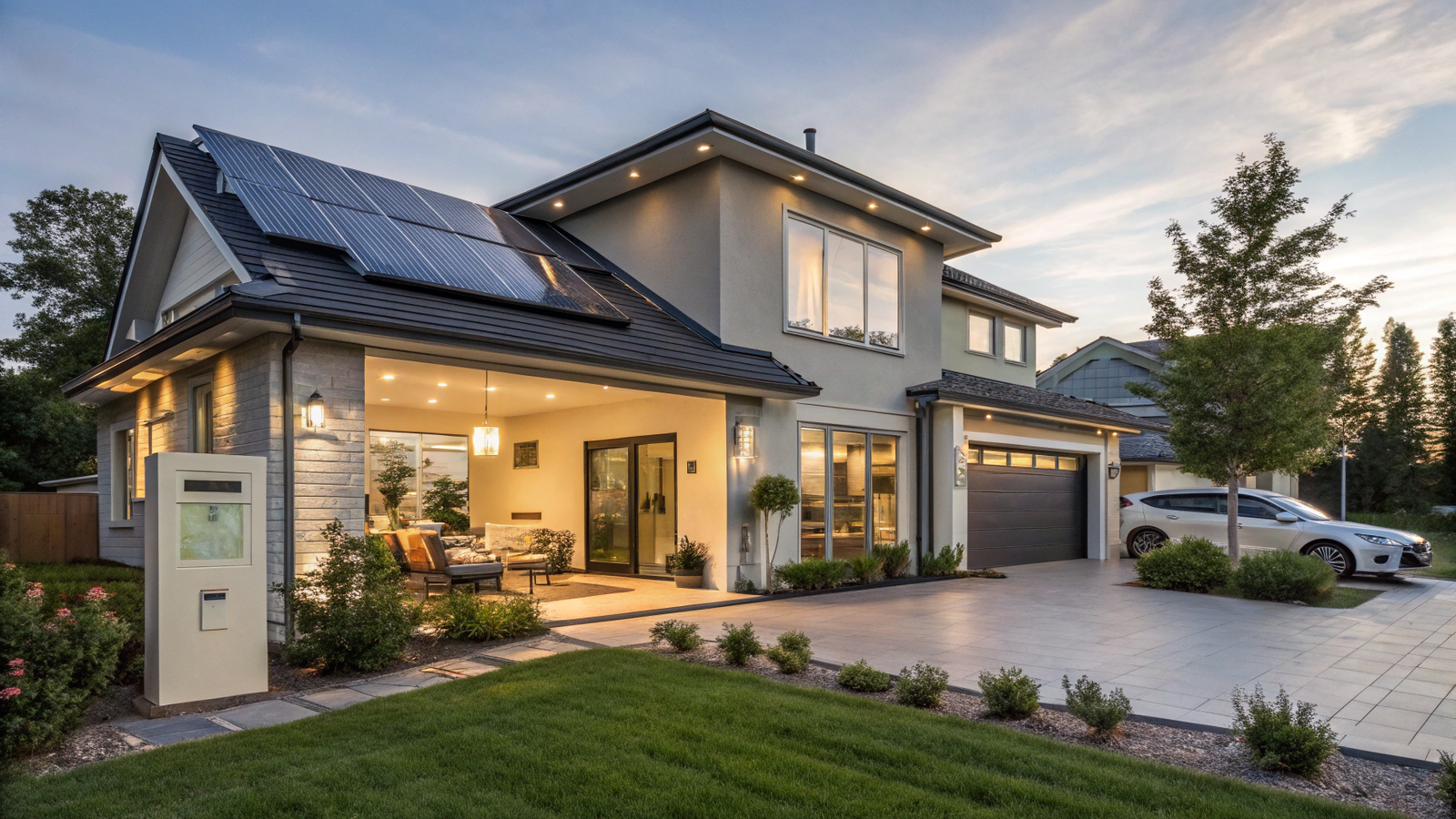
The Connected Eco-Home: Green Gadgets that Blend into Daily Life
The 21st-century home is no longer just a shelter—it’s a digital ecosystem. From smart lighting to intelligent climate control, modern households are increasingly equipped with connected devices designed for convenience, security, and efficiency. But with rising concerns about climate change, environmental degradation, and resource scarcity, a new frontier has emerged in home innovation: the eco-connected home.
In this article, we explore the concept of the connected eco-home—a living space where green gadgets work quietly behind the scenes, helping you reduce energy use, cut waste, and live more sustainably, all without turning your daily life upside down. These are not clunky, complicated devices. They’re designed to blend seamlessly into routines, offering sustainable living that feels as natural as turning on a light.
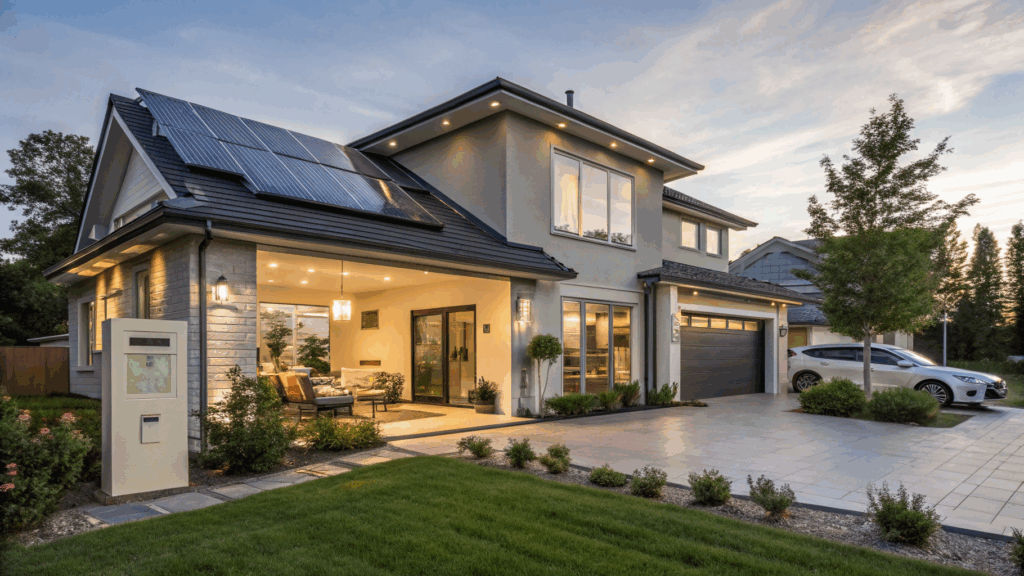
1. Defining the Connected Eco-Home
A connected eco-home integrates smart technology and environmental mindfulness into the home experience. Its goal is twofold:
- Automation for Efficiency: Leveraging connectivity to manage resources like electricity, water, and heat more efficiently.
- Sustainability Through Design: Prioritizing energy-saving, water-conserving, and waste-reducing innovations.
These homes don’t force sustainability; they enable it effortlessly, by embedding green gadgets into daily habits.
Key elements of an eco-connected home include:
- Smart thermostats and lighting
- Water conservation systems
- Solar integration and battery storage
- Real-time energy and resource monitoring
- Low-impact materials and energy-efficient appliances
Let’s look at how these systems and gadgets fit naturally into the flow of modern life.
2. Smart Climate Control: Comfort Meets Conservation
a. Smart Thermostats
Devices like Google Nest, Ecobee, and Tado° learn your preferences and schedules, automatically adjusting heating and cooling for both comfort and efficiency.
- Occupancy Sensors: Avoid heating or cooling empty rooms.
- Weather Integration: Adjusts settings based on outdoor conditions.
- Remote Control: Use an app to manage your home’s temperature from anywhere.
These thermostats can save up to 20% on HVAC energy usage, making climate control smarter and more sustainable—without sacrificing comfort.
b. Zoned Heating and Cooling
Smart vents and ductless systems allow targeted control of rooms, eliminating the waste of conditioning unoccupied spaces. With the push of a button (or a voice command), you can create a personalized environment that consumes fewer resources.
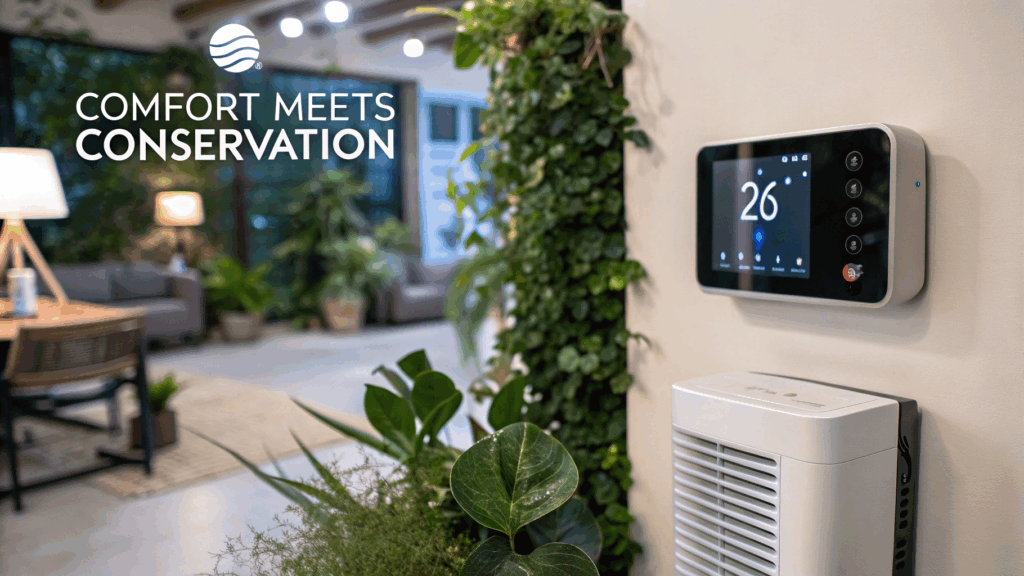
3. Intelligent Lighting: Efficiency in Every Glow
Lighting accounts for about 10-15% of a home’s energy usage. Smart lighting systems bring that number down with elegant, effortless solutions.
a. LED Smart Bulbs
Smart bulbs like Philips Hue, LIFX, and Nanoleaf not only last longer and use less energy, but can also:
- Adjust brightness based on time of day
- Respond to occupancy
- Sync with circadian rhythms
- Turn off automatically when no one’s home
These features not only conserve energy but also enhance wellbeing, blending eco-consciousness with everyday comfort.
b. Daylight Optimization
Smart blinds or shades (e.g., Lutron Serena, IKEA Fyrtur) open and close to maximize natural lighting and reduce the need for artificial light. When tied to solar sensors or weather data, these gadgets work invisibly to regulate both light and heat.
4. Water-Saving Innovations: Every Drop Counts
Water scarcity is an urgent global issue, and smart homes are taking note. Green gadgets are now capable of managing water use down to the drop.
a. Smart Irrigation Systems
Systems like Rachio or RainMachine connect to weather forecasts and soil sensors to water plants only when needed. These systems can cut outdoor water use by up to 50%, making them ideal for eco-conscious landscaping.
b. Leak Detectors
Water leak sensors (e.g., Flo by Moen, Phyn) monitor pressure, detect drips, and can automatically shut off water when a leak is found. This not only saves water but also prevents expensive property damage.
c. Efficient Fixtures
Smart faucets with motion sensors and low-flow settings—along with smart showers that limit flow based on time or temperature—reduce water waste in the bathroom and kitchen.
These changes require no lifestyle overhaul—just smarter fixtures that do the thinking for you.
5. Solar and Storage: Powering Homes the Clean Way
More homes are adopting solar energy, but today’s systems go beyond panels on the roof—they include intelligent management and storage.
a. Solar Panel Integration
Smart inverters like Enphase or SolarEdge optimize the amount of energy you get from your panels and make decisions based on time-of-use electricity rates, ensuring that your solar system always works in your financial and environmental interest.
b. Battery Storage
Battery systems like the Tesla Powerwall or LG Chem RESU allow homes to store solar energy for later use, even during outages. Combined with energy usage patterns from smart meters, these systems maximize energy self-sufficiency.
This local, renewable energy model reduces dependence on fossil-fuel-generated power and is one of the most impactful green choices a homeowner can make.
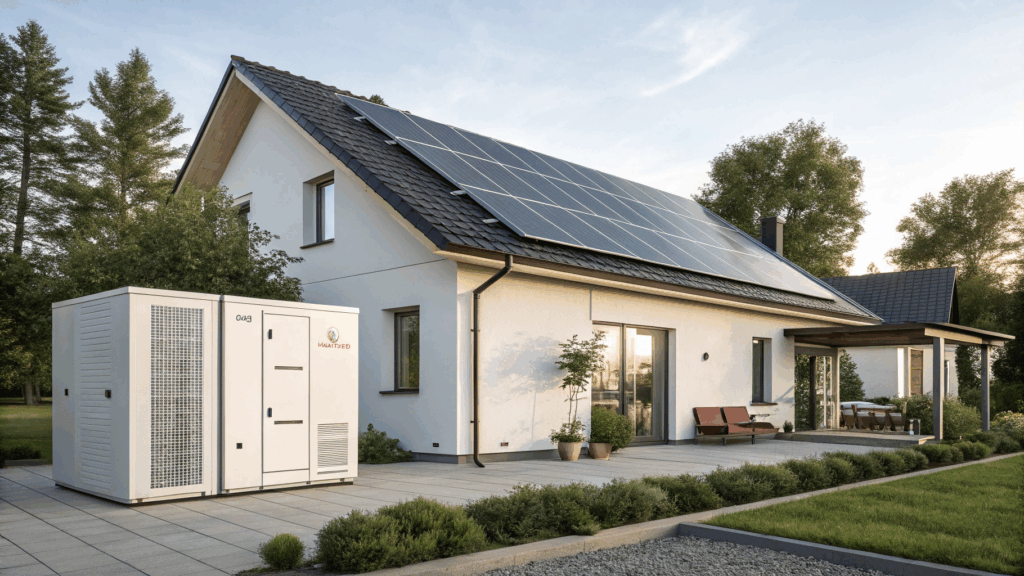
6. Waste Reduction Technologies: Smart Homes, Less Trash
Waste management can also benefit from smart integration:
a. Smart Trash and Recycling Bins
Intelligent bins like Townew or Simplehuman can separate recyclables, seal compost, or alert you when it’s time to take out the trash. Some even use image recognition to sort materials properly.
While these are still niche gadgets, their potential to support more consistent and correct recycling habits is significant.
b. Digital Composting
Compact, odorless home composters like Lomi or Reencle use technology to break down food scraps in hours. These devices make composting feasible for urban apartments and busy families, reducing food waste dramatically.
7. Kitchen Intelligence: Cooking with a Conscience
Kitchens are the epicenter of resource consumption—and a great opportunity for smart green upgrades.
a. Energy-Efficient Appliances
Smart dishwashers, refrigerators, and ovens now include:
- Energy-saving modes
- Usage tracking
- Scheduled cycles to run during off-peak energy times
Smart fridges can track expiration dates, suggest recipes based on what’s inside, and reduce unnecessary food purchases—cutting both cost and waste.
b. Smart Plugs and Power Strips
Plugging older appliances into smart plugs enables remote on/off control and power monitoring. This makes even non-smart devices part of your connected eco-system.
8. Air Quality and Health: Breathing Green Indoors
Indoor air quality has a major impact on health and comfort, and smart technology can help you breathe easier—literally.
a. Air Quality Monitors
Gadgets like Awair, IQAir, or Airthings measure CO₂, VOCs, humidity, and more. These systems notify you when your air is unsafe and integrate with ventilation systems or purifiers.
b. Smart Air Purifiers and Ventilators
Devices like Molekule or Dyson Pure Cool clean indoor air efficiently and adjust based on occupancy or air conditions. These gadgets maintain a clean, safe atmosphere without wasting energy.
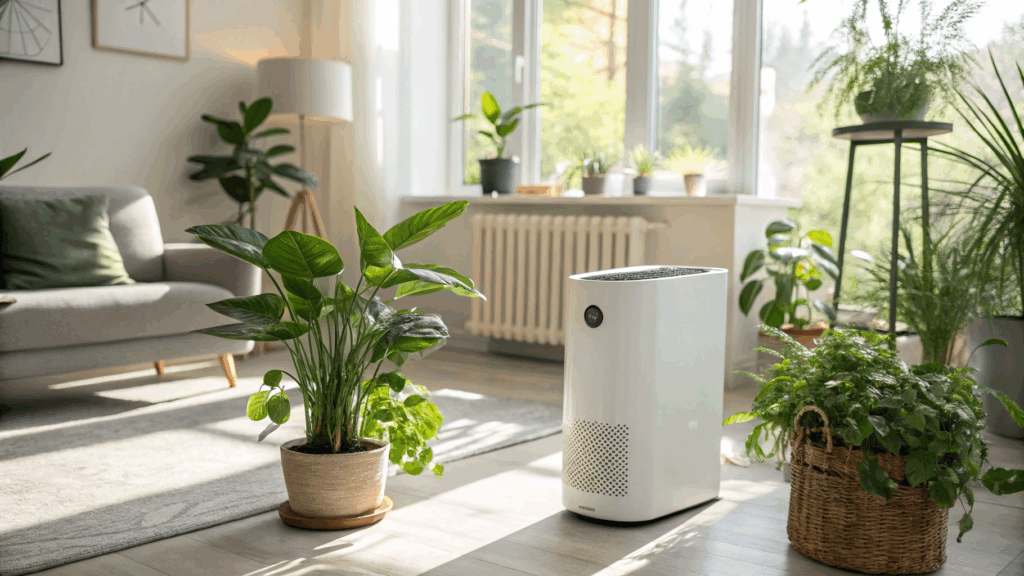
9. Everyday Automation: Making Eco-Living Second Nature
The beauty of the connected eco-home lies in automation that aligns with sustainability. Here are a few examples of how green habits become second nature through automation:
- Night Mode: Lights dim, thermostat adjusts, unused devices power down.
- Away Mode: HVAC, lighting, and water use are minimized while no one is home.
- Seasonal Adjustments: Smart thermostats and blinds adapt to changing weather automatically.
- Usage Reports: Weekly insights from energy and water monitoring apps help track progress and set new eco-goals.
These routines happen without requiring ongoing thought—sustainability becomes your home’s default setting.
10. Security and Eco-Consciousness: A Surprising Synergy
Security systems may not seem eco-friendly at first, but modern smart security contributes to sustainable living:
- Smart Cameras and Doorbells deter theft and allow deliveries without failed drop-offs, reducing unnecessary trips and emissions.
- Motion Sensors reduce lighting use and alert you to open doors/windows that could affect heating or cooling efficiency.
- Smart Locks and App Access eliminate the need for duplicate keys and streamline visitor access.
Security and sustainability can work hand in hand for safer, greener homes.
11. The Role of AI and Machine Learning
The future of eco-homes lies in AI integration, where systems learn from behavior and environmental data to optimize every aspect of home operation.
- AI learns when to lower blinds to keep a room cool.
- It identifies patterns in energy use and offers recommendations.
- It schedules appliances to run at the greenest times based on grid energy sources.
This level of personalization means your home not only reacts but predicts and evolves to become even more efficient over time.
